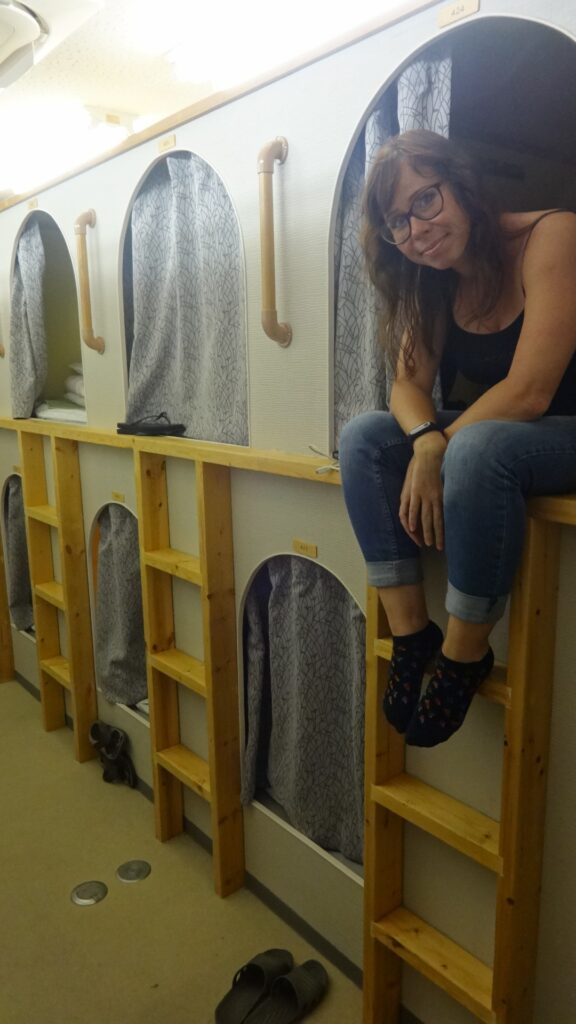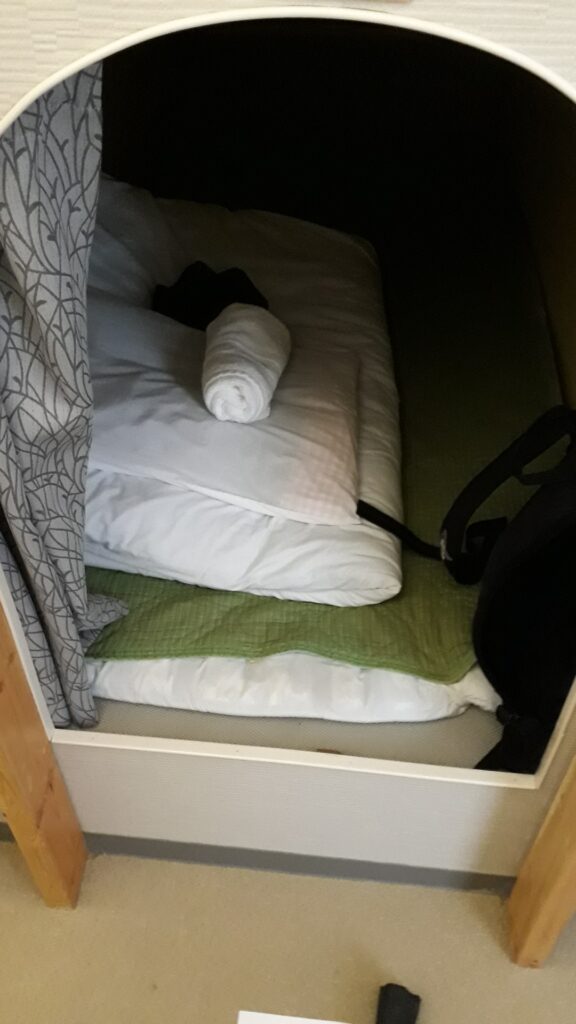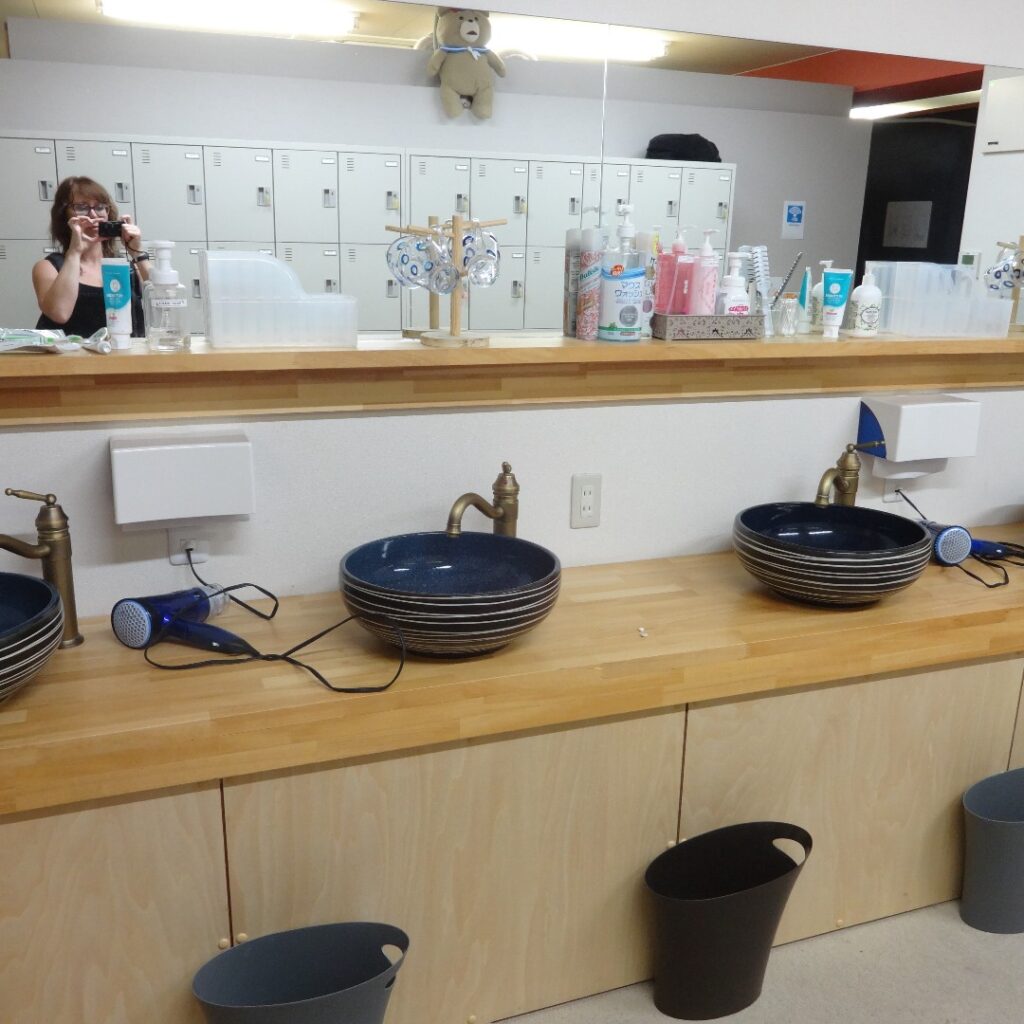
DAY 4
(Reading time: 4 minutes)
800 kilometers from Tokyo to Hiroshima in under 4 hours? Even with all the stops? The shinkansen made it possible. When traveling by train, I prefer to read. Sleeping while sitting up doesn’t work for me, and there’s nothing much to see outside anyway. But in this case I couldn’t have been more wrong. Watching from the window of a high-speed train traveling at full speed kept me entertained for most of the journey. Rapidly passing villages, rice fields, urban areas, hills, then villages again and so on endlessly. Captivating. Moreover, it was raining heavily outside, which added to the cozy atmosphere of the quiet train traveling through the countryside.
Occasionally, the conductor would pass through the carriages. They have a very nice custom here of bowing to passengers when entering and exiting the car, whether anyone notices or not. And they don’t check tickets. Why would they? Nobody rides without a ticket here.
Upon arrival in Hiroshima, the weather remained persistent, cold and damp, and it seemed to rain even more than when we left Tokyo. In such weather, it’s best to have something good to eat. Okonomiyaki, a fried cabbage pancake with all the toppings your belly desires, was the winner.

The staff at the restaurant served it to us already cooked on a hotplate in front of us so it wouldn’t get cold. However, I’m sure the hotplate is primarily for customers familiar with the process of preparing their own cabbage pancakes. But when they saw us, hungry foreigners, they made it easier for us, and we thank them for that.
People visit Hiroshima for an obvious historical reason, and we were no exception. What unfortunately surprised us was the physical condition of the Hiroshima Peace Memorial Museum after the earthquake in June 2018. Only about a fifth of the building remained open, the rest undergoing necessary repairs, and there were huge queues even for that small part, so we didn’t go inside.
We visited at least the Hiroshima Peace Memorial/Atomic Dome (Genbaku Dome), an iconic building designed and built by Czech architect Jan Letzel.
On August 6, 1945, an atomic bomb called Little Boy was dropped by Americans and detonated above this building. Despite significant damage, it survived the blast and still stands in Hiroshima today in the same condition as after the explosion. It serves as a reminder of the devastating power of nuclear weapons and is a symbol of hope for life in peace without them.
In Hiroshima, we also wanted to try accommodation in one of many capsule hotels Japan is famous for. Like traditional hotels, capsule hotels vary in appearance, price and quality. Some are for women only, others for men, but the basics are the same – communal areas and one sleeping pod per person. Not for claustrophobics.
Our capsule hotel was of a more modest kind, and the sleeping pods in it were really tiny, but as a first experience, it was great.


In every capsule hotel, there is a reception where you get the number of your sleeping pod and of lockers for your luggage at check-in. The communal areas include bathrooms, a kitchen, a dining area, possibly a lounge, or baths.
The bathroom in our accommodation was meticulously clean and equipped with all possible toiletries (hairdryer, shampoo, shower gel, makeup removers, ear cleaners, toothpaste, feminine hygiene products…).

The kitchen offered coffee, tea, juices, toast bread, butter and jams… well, the food wasn’t anything special, but we only stayed here for two nights, and besides, there was a 7-Eleven convenience store across the street.
We’ll definitely try this type of accommodation again sometime; there are even capsules for couples. For now, it was enough to broaden our horizons and narrow down our sleeping space.
-endy-
DONKEY’S SPECIAL:
-mj-